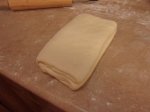
Laura had to make a puff pastry recipe about a month ago for work. The chef there wanted to make a beef wellington for family meal, so it seemed natural to ask the pastry chef to make puff pastry dough. Unfortunately, she hadn’t made puff pastry since the days of culinary school, seeing as almost every company in the food industry buys it in frozen sheets. So, we found our old college recipe, and, being the laminated dough king that I am, I explained how to make the dough, make the beurrage (a butter and flour mixture), fold the beurrage into the dough, and make all the subsequent folds and turns to make that layered deliciousness.
Well, Laura made it at work. It came out fine and they used it for the wellington, but she wasn’t overly confident that she did all the folds and turns correctly. So, she’s been bugging me to show her how to do it at home. I saw it as a perfect opportunity to make some homemade turnovers, which I had been craving lately for whatever reason. A win-win situation!
However . . .
I made the puff pastry. I made the dough and the buerrage, did all the folds and turns, and ended up with a finished laminated puff pastry dough. I even went on to make the turnovers. But the dough itself sucked. It was the most difficult dough I’ve ever laminated in my life, and I once did a whole wheat puff pastry with a duck fat beurrage. The dough itself was far too soft, which made the lamination process difficult. It also made the final shaping difficult, as I had to start and stop the rolling process to chill it again.
In other words, I will not be posting the recipe. It’s not worth it. I will, however, be posting the process that I went through to make the dough, as I still feel that there can be something fun to learn. Not everybody knows what a laminated dough is, let alone how to make it. As a result, most don’t know the pain staking process people go through to make these doughs, which includes not just puff pastry but croissant dough and Danish dough.
So what defines a laminated dough? Lamination is a term that is used to describe the process of layering a dough with butter and then folding it many times over to achieve an exponential amount of dough/butter layers. This is accomplished by encasing a beurrage, which is a mixture of butter and a small amount of flour as described above, with the dough and sealing it. It is then rolled out lengthwise (professional kitchens use a large piece of equipment called a sheeter to easily achieve a specific thickness) and then folded into itself. Once folded, the dough is turned 90 degrees clockwise, and then the fold is repeated. Usually, though, the dough is allowed to rest in the refrigerator so that it can relax and prevent the butter from melting into the dough from all the friction heat, which would destroy the layers and defeat the purpose of lamination.
There are two types of folds. One is called a tri-fold and the other is a book fold. With the tri-fold, the dough is rolled out lengthwise until it reaches about 1/4 to 1/2 inch thickness. One end is folded in about a third of the way. The other end is folded over the top of that. It’s similar to how a letter might be folded to fit into an envelope, only it’s done lengthwise instead of height wise. With a book fold, each end is folded into the center of the dough. The dough is then folded in half, where the ends met. With each fold I do, I always use a pastry brush and water to wet the edges of the dough. This helps the dough stick to itself when you’ve performed the folds.
So let’s start with the first step. Using your favorite puff pastry recipe (not mine), make the dough, which is called a détrempe. It’s an unyeasted dough, so it will be a simple straight method. Water first, then flour, butter, salt, and whatever else the recipe calls for.
Mix it until incorporated. Some recipes will require you to develop the dough on a high speed (although it should never be so much that it pulls a window,) and other recipes will stop at the incorporation process.
Once the détrempe is made, you’ll need to shape it into half of a sheet pan. Very lightly spray the sheet pan and line it with parchment. This helps the parchment stick to the pan and keeps it from moving around. Press the détrempe into half of the sheetpan and fold the parchment over it to cover the dough.
This should be refrigerated for at least an hour. If you’re going to refrigerate it overnight, wrap the sheet pan in plastic wrap.
Next, make the beurrage according to your recipe. You’ll want to cream it the same way you would cream butter and sugar for making cookies. Incorporate it the best that you can without whipping air into the butter mixture.
Line another sheetpan with parchment and spread the butter onto half of it like you did with the détrempe. Fold the parchment over the beurrage and refrigerate it until it is about 70 degrees F so that it gets cold but still remains pliable. If it gets too cold, it will break into pieces as you try to fold the beurrage into the détrempe.
Pull out the détrempe and beurrage when ready. Right now, they are the same size. You will need to roll out the dough so that it remains the same height as the beurrage, but is twice as long. Lightly dust your working surface with flour, and dust the détrempe as well. Roll it out with a rolling pin to achieve the desired length.
When the dough is rolled out, place the beurrage on the right side and fold the left side of the dough over.
Pinch the edges closed to completely encase the beurrage. Refrigerate it for 20 minutes.
Now the fun begins. Pull the dough out and plop it onto a lightly dusted work surface. Roll it out lengthwise until it reaches about a 1/4 inch to 1/2 inch thickness. Perform a book fold, as described above. When folded, use a knife to gently mark which end is the top. We use this mark as a reference when we turn the dough. Let the dough rest in the fridge for about 30 minutes.
With the 30 minutes up, pull the dough out. We’re going to give this dough a 90 degree clockwise turn, so use your reference mark and make sure that it is on your work surface facing to your right. Now, you’ve surely noticed that this means the dough is now longer than it is tall, so you’ll need to start out by rolling it out to get the height of the dough back. Once achieved, roll it out lengthwise again until the same thickness as last time. Do another book fold and mark the top. This is your second fold. Rest again in the fridge for 30 minutes.
I think you get the picture from here. Turn, do your third fold, mark, then rest. Finish with your fourth and final fold.
You now have puff pastry dough, ready to make into puff pastry deliciousness. At this point, you’re done for the day. Don’t attempt to make turnovers or napoleons or anything else with this dough, as it will be far to elastic and tenacious after all the folding. Wrap it up nice and tight in plastic wrap and let it rest overnight in the refrigerator, or freeze it for use later on.
No doubt I will be trying another puff pastry recipe in the future. In fact, there will be many test bakes in the future, and not just for puff pastry related goodness. I’ve got three and a half years left in the Army, and with the way things are looking, I’m not likely to re-enlist. Three years goes by pretty quickly at my age, and Laura and I are looking to the future. So, might as well get test recipes out of the way now, so we can document and catalog failures and successes before we scale them for larger production purposes, if you know what I mean 😉
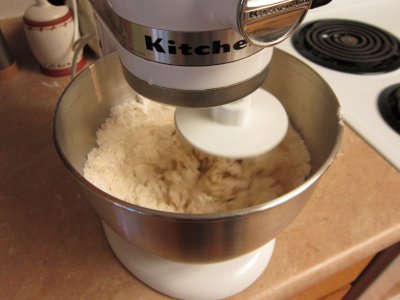

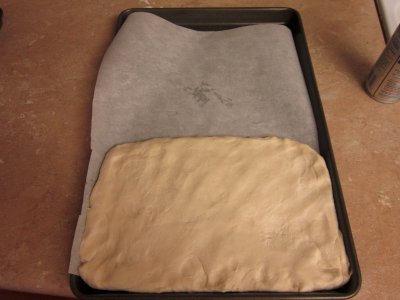

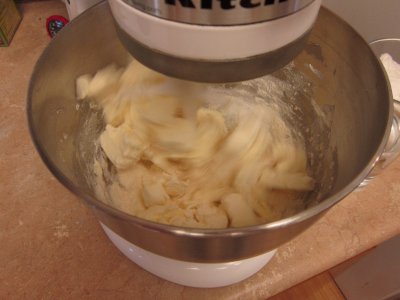
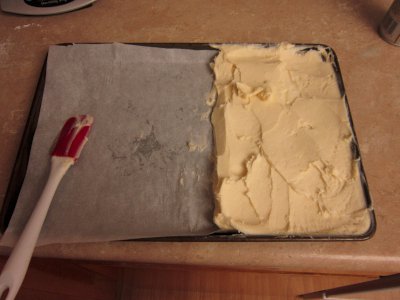


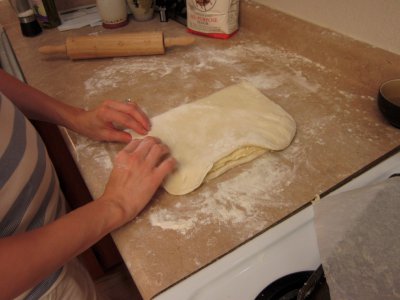
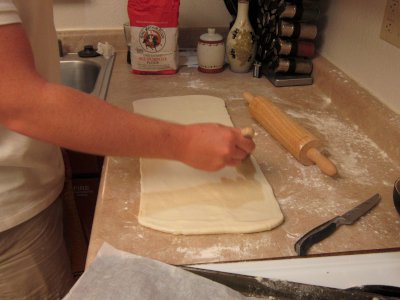


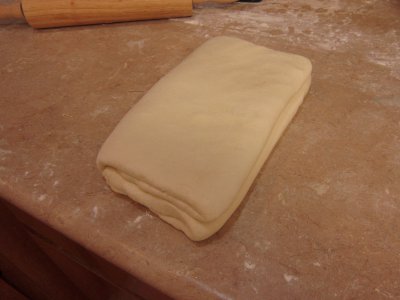
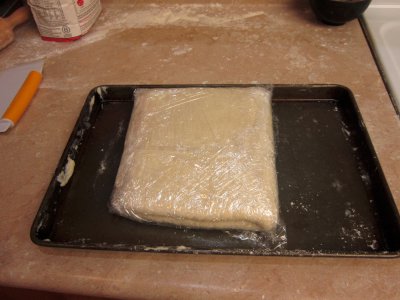
Anonymous
June 21, 2016 at 5:16 pm
你好,能给我一个带烘焙配方的网址吗?